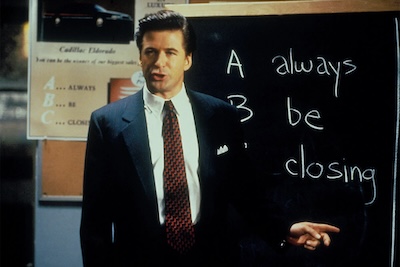Atsushi Kaneko of A-1 Pictures, Kanako Takahashi (a producer from Crunchyroll), and Sota Furuhashi of Aniplex all got together with The Contending to talk about the anime sensation Solo Leveling. Here, they talk about how the original comic inspired the creation of the anime. They also dive into the fight animation and how much of the crucial world building the audience sees. Plus, they describe the different dynamics at play with lead character Sung Jin-woo. Finally, they reveal how delightful and surprising the series’ success has been. They cannot wait to give us more of this world.
The Contending: Did you all think Solo Leveling was going to be the phenomenon that it became?
All: [Laugh]
Atsushi Kaneko: No, I did not think it would be.
Sota Furuhashi: Likewise, I echo Kaneko’s sentiment. It’s hard to imagine that it would ever become this big. What we did know was that the original underlying works had a strong fan base around the world, but that it would explode to this extent was beyond my imagination.
Kanako Takahashi: At Crunchyroll, we knew there were a lot of fans for the underlying comic. So, it was an exciting project to work on, and we knew it had potential. But how that potential translated to reality exceeded our expectations.
The Contending: What was it about the original source material that made you want to turn it into an anime to begin with?
Sota Furuhashi: I think the project started around 2020 when I read the original source material and brought it to Kaneko at A-1 Pictures, and the animation adaptation project started from there. But in terms of why we thought this material was a good candidate to animate was the strong fan base, but in reading the source material I felt there was this timeless universal theme that anyone could find enjoyable and relate to. Combine that with the really cool imagery and dynamic action scenes it felt like the perfect project to animate.
The Contending: This is a story with so many characters, but so much of what we are getting across is in the action sequences. What kind of challenges does that create in the storytelling?
Atsushi Kaneko: So I’m answering this personally as a producer at A-1 Pictures. I personally enjoy expressing a lot of drama storytelling in anime. In Solo Leveling, however, I didn’t want to go too heavy on the drama despite that being what I like and prefer, because I knew when reading the comic that what the fans wanted was the action. I think there’s definitely storytelling and character development that happens on the drama side, but a lot of it does happen in the action because that’s what the fans want to see. So that was the mindset and direction we wanted to go with when ultimately working with our animators and the rest of our team to make sure there was a balance of what the fans were expecting.
The Contending: Within the anime we get hints at a bigger story, that there may be more to the dungeons, and it is connected to the program that Sung Jin-woo is using to get stronger. But it is also a show that is very easy to jump into and understand what’s going on in the world in general and just get into the action. So, how was it decided to try to get some of these plot points out within the show? Is it just what’s in the source material, or was there other planning going on in giving us details about the world?
Sota Furuhashi: First off, because the story takes place on planet Earth in a country that is unnamed but one we can all relate to and understand, the basic setup of that made it easier. In terms of the dungeons and the monsters within, I think audiences by now, especially anime watchers, have some exposure to video games. So there are a lot of relatable RPG terms/literacy of the game language. Then combining that with our reality lends itself very well to anime and gaming audiences. So I think the fans have a lot to be excited about and can seamlessly understand and immerse themselves into this world. In addition, when we were adapting this into an anime, the author Chugong gave us a lot of clues in terms of the world setting that helped inform a lot of what we wanted to expand with the anime.
The Contending: An aspect I found fascinating over the two seasons was watching Jin-woo, who starts as this weak fighter but very empathetic character, and over time he seems to be losing his sense of empathy to an extent because of how powerful he has become. Yet everything he is doing is to help his mother and is still always helping people, even if he seems distant from them. Then we get to the end of season two where he is so powerful and has succeeded in aiding his mother, so he decides I will help my friend create this guild, and is starting to notice Cha Hae-in has feelings for him. So now we are getting even more insight into him as a character. So with all that, what do you all think of him as a lead and his progression as a character?
Sota Furuhashi: I think that is a very interesting dynamic, the balance between empathy and power; I do not know if those two are mutually exclusive. Because our protagonist starts off extremely weak and his world is quite limited with an inability to escape his present circumstance. Yet through gaining power there is this shift in how he approaches and involves himself in the world and inevitably, because he gets more power, he has to become involved. There are others around him that begin to rely on him or are attracted to that power, and the irony is that, in an effort to become more powerful, he inevitably has to become more involved in his surroundings and the people around him. That dynamic and balance is an important aspect of the series as a whole as well.
The Contending: Any final thoughts, or moments in making the show that really stood out for you all?
Atsushi Kaneko: As you may be aware of with anime when they go on air the opening serves as almost the face of the franchise that’s supposed to get the audience and fans excited. So that is one of the most important parts that needs to be animated and therefore animated in house. Yet because Solo Leveling was originally a Korean manga, I wanted to pay my respect to that heritage. So we outsourced the opening to a Korean studio called Studio PPURI and gave them full creative control. Again this is unprecedented, but what we got in the end was something that we at A-1 Pictures would not even have thought of creating in terms of how it was animated and expressed. When I saw it for the first time it really excited me, because it felt like an international production of different minds and talents coming together to aid and deliver this experience. It was a very exciting moment for me.









